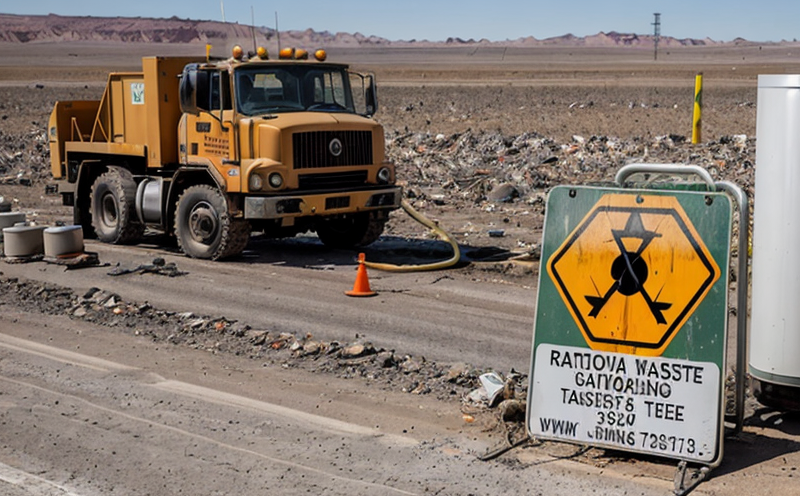ISO 18589-13 Testing of Waste Containing Natural Radionuclides
The ISO 18589 series specifically addresses the testing and characterization of waste containing natural radionuclides. This standard is crucial for ensuring that radioactive waste is managed safely, both from an environmental and a public health perspective. The primary focus of this section will be on the requirements outlined in ISO 18589-13, which provides detailed guidance on how to perform the necessary tests.
The testing process typically involves several key steps: sample collection, preparation, analysis using appropriate radiation detection instruments, and subsequent data interpretation. The goal is to ensure that all waste containing natural radionuclides meets stringent safety standards set forth by international regulations such as ISO 18589, ASTM D7624-09, and others.
In terms of sample preparation, it is essential to follow precise protocols to avoid contamination or loss of radionuclides. Common methods include air drying, sieving, grinding, and homogenization. Once the samples are prepared, they can be analyzed using gamma spectrometry techniques. The choice of instrument depends on the type and concentration of radionuclides present.
Data interpretation plays a critical role in this process. Analysts must carefully evaluate the results to determine if the waste meets specified limits for natural radionuclide content as defined by ISO 18589-13. Reporting these findings accurately ensures compliance with relevant regulatory requirements and supports informed decision-making regarding disposal methods.
Understanding the broader context of radioactive waste management is important when discussing this service. Radioactive waste comes from various sources including nuclear power plants, hospitals, research facilities, and industrial processes. Proper testing helps ensure that such materials are handled safely throughout their lifecycle—from generation through final disposition—minimizing risks associated with improper handling.
For those involved in quality management or compliance roles within organizations dealing with radioactive waste, understanding how to implement ISO 18589-13 testing procedures is vital. By ensuring accurate and reliable test results, these practices contribute significantly towards maintaining high standards of safety across industries.
Industry Applications
| Application Area | Description |
|---|---|
| Nuclear Power Plants | Testing is essential to monitor and control the levels of natural radionuclides in spent fuel pools, storage facilities, and decommissioning sites. |
| Hospitals & Research Institutions | Ensures compliance with regulations for handling radioactive waste generated during medical procedures or research experiments involving radioisotopes. |
| Industrial Facilities | Helps in assessing the impact of industrial activities on the environment by providing data on natural radionuclide concentrations within facility boundaries. |
International Acceptance and Recognition
- ISO 18589-13: This standard is widely recognized for its comprehensive approach to testing waste containing natural radionuclides.
- American Society for Testing Materials (ASTM): ASTM D7624 provides additional guidance on sample preparation and analysis, often used alongside ISO 18589-13.
- European Committee for Standardization (CEN): CEN standards provide harmonized approaches that are widely accepted across European countries.
- International Atomic Energy Agency (IAEA): Guidelines from the IAEA are frequently referenced in conjunction with ISO and ASTM standards to ensure consistency globally.
Environmental and Sustainability Contributions
The accurate testing of radioactive waste according to ISO 18589-13 not only enhances safety but also supports sustainable practices by reducing the potential for environmental contamination. By ensuring that all waste is properly characterized before disposal, organizations can make informed decisions about treatment methods and ultimately contribute positively to sustainability goals.
Compliance with these standards helps minimize long-term risks associated with improper handling of radioactive materials. This contributes significantly towards protecting ecosystems and public health while promoting responsible stewardship of resources.





